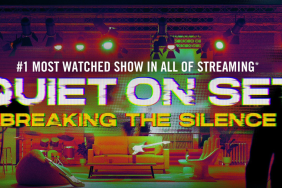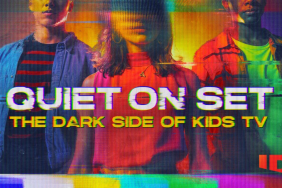Guantanamo and Abu Graib have become catch phrases for what went so horribly wrong with the government’s attempt at ending the terrorist threat after the events of 9/11. Amidst all the questionable imprisonment and torture tactics, one story went mostly unnoticed, that of an Afghan taxi driver named Dilawar who was sent to Bagram Prison despite his innocence, only to die a few days later due to brutal beatings by the U.S. soldiers assigned to getting information out of him.
Filmmaker Alex Gibney (Enron: The Smartest Guys in the Room) has used Dilawar’s story as a jumping off point for his latest documentary Taxi to the Dark Side, which explores the government’s use of torture and interrogation to fight terrorism post-9/11, but not just at the two most known imprisonment camps. It includes fascinating interviews with some of the soldiers involved in Dilawar’s wrongful death, as well as government officials on both sides of the debate about whether one really has to do “whatever is necessary” in order to get information about potential terrorism, often imprisoning and torturing innocents along with those involved in the terror.
After taking the current administration to task in his last two movies, as well as in Charles Ferguson’s excellent war doc No End in Sight, which Gibney executive produced, his next documentary, Gonzo: The Life and Work of Dr. Hunter S. Thompson, which premieres at the Sundance Film Festival next week, is somewhat of a departure. As we learned, “Taxi” turned out to be more of a personal story for Gibney than he originally intended.
ComingSoon.net: This is a little different from “Enron” but there are a few of the same ideas in this one.
Alex Gibney: There’s similar themes. It’s a much darker tale. “Enron” in some way was about illusion, too, and it was about people who are sometimes comical characters. Early on, there was a cut of this film that had a few more Enron-like dark comic moments, but I think over time, viewers just said, “Look, Alex, give it to us straight.”
CS: It’s a very hard movie, because there isn’t much room for entertainment or fun or comedy when you’re dealing with torture. Was that difficult?
Gibney: It was. It made me nervous. I mean, should I make a film about this? Is it too dark? But I think at the same time, it’s kind of a journey and if all of us think about it, we can all put ourselves in the place of some of these interrogators and MPs and say, “What would I do in that situation? Where would I be? And what kind of society would I want and who do I want to be?” So the key was to make it a human story and then you take a journey, and where do you end up at the end of that journey? That’s why I liked the title, “Taxi to the Dark Side.” I mean, it implies a journey and it also implies that sometimes, getting to the dark side is just as easy as taking taxicab ride across Washington, D.C.
CS: This also ended up being a far more personal story, not only because you’re focusing on the one man who acts as the framing device, but also because your father had the background interrogating Japanese soldiers. Did you know about that part of his life before you started making this film?
Gibney: No, and when I started making the movie, my dad was still alive, and halfway through making the movie, he was the one, not long before he died, who said. “Go get the camera. I want to talk.” He was really pushing me to make this movie, so I went and got the camera, he talked, and I sat on the footage and at some point, I thought, “Well maybe I should put it in,” because there was an organic connection, because he had been an interrogator and that’s one of the reasons why he felt so strongly about this subject. At the end of the day, I did put him in, and that’s why I decided to narrate the film, too, because it became personal at that point.
CS: You talked to a lot of the soldiers who were involved in the main incident, but were you able to get any additional insight from talking to your father?
Gibney: I think the basic insight I got from him
first of all, he was far better trained than a lot of the guys I was talking with in this film. He went to the Naval Language School for a year to learn Japanese, and while he was a petty junior officer, he ended up talking to petty senior people, so that was not unlike what some of these guys had been through, but his experience was pretty basic, which was when you get these guys off the battlefield, they’re human beings just like anybody else, and over time, you develop a rapport with them. You say, “Look, you’re not going back to the battlefield, pal, so we might as well talk. You’re out of it now, You’re not going back.” And that’s what Jack Cloonan talks about in terms of how the F.B.I. does it. It’s not like they think these guys are such great guys and they’re going to become their pals, but they can have a human relationship with them, and that’s ultimately how you get information. It’s like we’re talking now. It’s sometimes hard to get people to agree to do an interview, but usually when they do agree to do an interview, you can’t shut them up. (chuckles) That’s probably the same case with me.

CS: Was that the case with John Yoo (the government’s former Office of Legal Counsel)? You’d think he’d be one person knowing the subject matter would not want to go on record taking credit for the torture techniques being used to get information.
Gibney: I think John Yoo took some perverse pride in being the spokesperson for this policy. I think he was kind of the frontman for this whole policy, just like Guantanamo became a kind of theme park for the Bush policy of cruelty. So John Yoo became the poster boy. He was sort of saying, “This is what we should be doing. This is what I’m proud of having done.” So come one, come all, I’ll talk to you. Now I think he’s getting a little tired of it now, but we got him when he was still talking. I find it jaw-dropping really, but I think John Yoo is a guy who has played kind of a sorcerer’s apprentice role in a way that’s
well, we’ll see. He’s starting to be sued now. We’ll see how the criminal prosecution goes.
CS: How long ago did you actually start this movie because a lot what is covered happened in 2002, 2003
Gibney: I started this in the fall of 2005.
CS: Were you already familiar with Dilawar’s case and what had happened at the Bagram Prison in Afghanistan?
Gibney: I read the piece by Tim Golden. It was one of the things in trying to figure out where I wanted to go. I just read that piece and had been haunted by it, but when I was trying to do the film, I kept going back to the piece and finding more and more in it that I found powerful.
CS: Did you see that as possibly being the movie itself or did you always see it more as an introduction and framing device?
Gibney: It was hard to know. It might have been the movie right there. At the same time, just making the Dilawar story, whenever you start to talk about the subject, generally there are questions that people raise, and you kind of want to answer those questions, like “What if?” Everybody always raises that ticking time bomb scenario, so we couldn’t elude that. Somehow I had to find a way of dealing with that question in this, or “What’s so bad about standing? What’s the big deal?” Stuff like this and how and why does torture start to corrupt the rule of law, what does that have to do with habeas corpus? Funny questions that would rattle around and we’d see in the literature all the time and realize that it wasn’t enough to do the Dilawar story. You had to connect this to some of these larger questions that everybody was beginning to ask about, “What are we doing?”
CS: Abu Graib and Guantanamo had obviously been on the news a lot and it was very much present in the public consciousness. People knew it was going on and had some idea how it may have started, but I don’t think we ever saw it traced in this way to the higher-ups who might have been responsible.
Gibney: Well, that was the fun part was we can trace one person’s story and trace it through the system that way, so you didn’t get all confused and it didn’t seem like different cases. It’s all part of the same person’s story.
CS: But even the torture techniques and how you showed that they were being used in Guantanamo before they started showing up in Afghanistan and Iraq. Was this film impossible to structure?
Gibney: Yeah!
CS: You had done all these interviews and you had Dilawar’s story, but at what point did you start putting it together, since it seems like it would be impossible without some kind of outline going into it.
Gibney: I mean, the one structural tool I had with Dilawar’s story–and it was something I knew from the Dilawar story and one of the reasons I wanted to do it, was that you have this interrogation team leave Bagram and they go to Abu Graig, so that makes the connection. And then the people in Dilawar’s taxi are sent to Guantanamo for 18 months, and really, it’s a kind of cover-up for this crime because they were perfectly innocent, too. They were just warehoused there for 18 months and then sent back, but that’s also not unlike the case of many people who went to Guantanamo. So suddenly, through the Dilawar story, I at least had these three points on the cruelty compass that I was able to deal with, and then out of that, I began to put together a structure. It took a long time to get the structure right. One time there was a huge Guantanamo section that became two Guantanamo sections. The story of John McCain was another interesting one that seemed to come up organically, but we had to find a way to keep all the balls up in the air. You want to keep your main story going enough so that it becomes a thread but also find a way to go through some of these big questions that people have, one at a time.

CS: As far as the Gitmo Press Tour is that something you went and did after you had already talked to people and was it hard doing that knowing about all this other stuff going on?
Gibney: Well, it was fairly early in the shooting process. You know, I started in the fall of 2005. I did the John Yoo interview and a couple other interviews in 2005 and then we had the opportunity to go to Gitmo, so we went. It was pretty early in the process for me, but one thing that struck me–I think a lot of media went down to Guantanamo thinking, “Oh, man, we’re going to the torture capitol to see what we can see about this.” They were never going to see that, but the fact is that at a certain point, the administration decided to turn Guantanamo into a kind of showplace, a kind of theme park. That’s what we filmed. We filmed the dog and pony show. We filmed ourselves and the other reporters all being taken on this tour, that’s what it is to the outsiders. There’s another story, which we tried to illustrate with the interrogation of Mohamed al-Qahtani and that’s where I think sometimes you have to go to recreations. I think if the administration says, “We’re not going to let you in.” What’s our choice? You can say, “Oh, okay, well then I guess we just won’t report about that” or you do something different.
CS: Was this before the Abu Graib pictures came out when you went there?
Gibney: No, it was after.
CS: So this tour was already part of the government’s spin control
Gibney: Yeah.
CS: Now while you were in the course of making this movie, there were other movies about the subject like Michael Winterbottom’s “The Road to Guantanamo” and the documentary “Ghosts of Abu Graib.” Did you try to stay away from those to keep your own perspective?
Gibney: Yeah, I mean I knew some of these other things were going on. Errol Morris is now coming out with “Standard Operating Procedure.” I knew about Rory’s film. Inevitably, there was going to be
people are treating the same territory. You just have to find your own way. I knew that by following the Dilawar story, I would have a certain peculiar perspective. I also knew that I didn’t want to get bogged down in Abu Graib. In some way, once Abu Graib happened, the military and the civilian leadership made a conscious attempt to dig in on Abu Graib. “Let’s have more investigations, more investigations.” So it all became about Abu Graib as if to say, “Here’s the area where there really were abuses.” I used Abu Graib, not to ignore it, but to show how much it was connected and part of the rest. That it wasn’t an abberation, it was just part of the system.
CS: But did you try to avoid the movies and not watch them until you finished your movie.
Gibney: I didn’t see “Ghosts of Abu Graib” until after I had completed my film, I saw it at Sundance. I had sent Rory a copy of a film I had done called “Human Behavior Experiments” for the Sundance Channel about the Milgram Experiment, the Stanford Prison Experiment and the Columbia Experiment.
CS: So you had already done some research and knew a little about this stuff.
Gibney: Yeah, because Milgram Experiment is in “Enron.”
CS: Obviously, the soldiers in this took a lot of the blame and had to serve time for what happened at Bagram, but how do you feel about the “following orders” excuse which always comes up at times of war.
Gibney: I don’t think it’s an excuse for conduct. In other words, you’ve got to take responsibility for your own conduct, but I think it does need to be taken into perspective. We have a principle of command of responsibility that we applied at the Nuremberg Trials, but all the investigations in this detainee abuse stuff has all been focused down, none of it has been focused up the chain of command.
CS: Were all the soldiers you talked to open to talking about the case?
Gibney: I think they were conflicted. I think they were not open to talking about it but at the same time, they felt scape-goated and needed to tell their story, because they felt that they’d been tarred with the brush, but why wasn’t everybody tarred? Why were they singled out?
CS: Did the military try to prevent them from speaking to you?
Gibney: A lot of these guys were out of the military. Some of them had been out of active service (when they were charged), so a lot of these guys were National Guard.

CS: You follow this chain of command right up to Rumsfeld and Cheney, as does Charles Ferguson’s movie “No End in Sight” which you produced. At this point, is there any chance that the administration will ever be held accountable or prosecuted for their involvement?
Gibney: I doubt it, but you never know. In “Enron,” I do know that the prosecuting attorney–the guy who wrote the opening argument for the prosecution–was caught in a Houston hotel room and clicked on the Pay-per-View and noticed “Enron: The Smartest Guys in the Room” and he watched it, and he pilfered his opening argument from the opening of the film.
CS: Obviously, we have an election coming up next year, and between the three movies, you’ve exposed a lot of things the current administration has done wrong
Gibney: Oh, I got one more coming.
CS: But is the next administration completely screwed because they’re going to have so much of this stuff dumped in their lap that they’ll have to figure out how to fix? And is this stuff completely irrepairable?
Gibney: (Is there) no way out? No, I think there’s a way out. The way out is to reckon with the past. That’s how you find a way forward in the future. To try to chart a path and to
what has been done can always be undone. We can forge a new
and at the very least, we can hope that the next administration is at least more competent.
CS: Do you think that they really know what they’re in for and what they’ll have to deal with? And I’m talking either Republican or Democrat here. Is it important to reach out to them with films like this?
Gibney: Right, I would hope so. I would hope they would reckon with what’s gone on to date before they blithely step out into the future.
CS: As far as this new doc “Gonzo”, how did that come about? Were you making that at the same time as you were finishing this up?
Gibney: It was an assignment that was given to me, and it came out at the same time that I had been reading about Hunter (Thompson) and thinking about him not long after he died–he committed suicide–so I took it on. It was a hellish and also a wonderful experience. It took a long time to do, but we’re done, and I think it’s pretty good.
CS: So “Taxi” has been done for a while, I guess.
Gibney: “Taxi” was at Tribeca, so it was finished by then–just barely–and “Gonzo” like I said, I’m still mixing it.
Taxi to the Dark Side opens in New York and Los Angeles on Friday, January 18.









